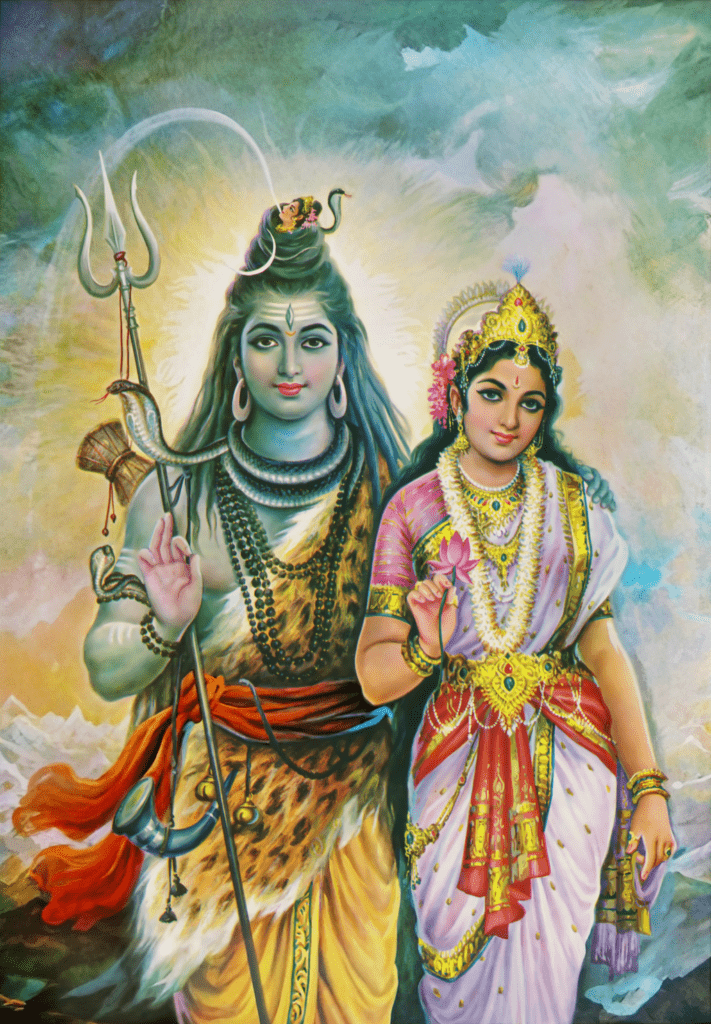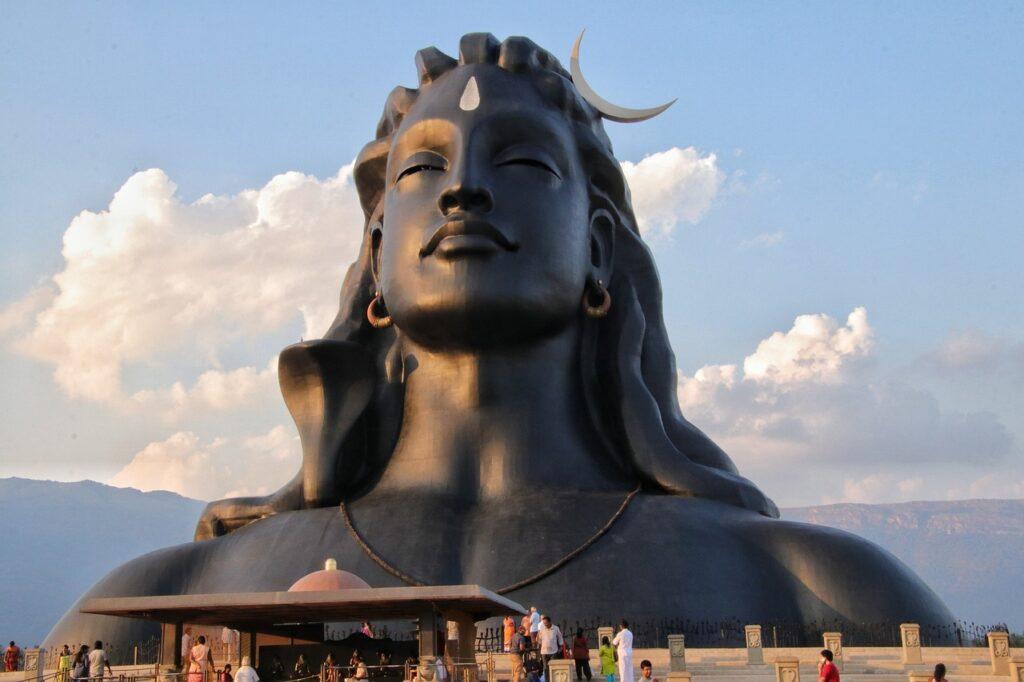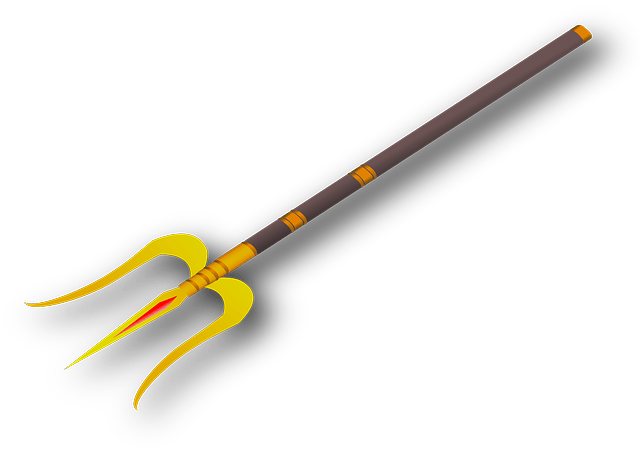
In the celestial realms, amidst a grand assembly of prominent beings, demigods, sages, and fire-gods had gathered to partake in a great sacrifice. Among them was Daksha, the leader of the Prajapatis, known for his pride and authority. However, during the event, Daksha was offended when he noticed Lord Shiva sitting without showing him due respect. Consumed by his pride, Daksha vehemently spoke against Lord Shiva, hurling insults and accusations at the peaceful deity. Daksha’s accusations targeted Lord Shiva’s reputation and alleged disregard for proper manners. He further expressed his dissatisfaction with Lord Shiva as his son-in-law, believing that the divine being was not worthy of marrying his daughter, Sati.
Lord Shiva, known for his composed nature, remained unaffected by the verbal attack. However, the tension between Daksha and Lord Shiva grew, leading to a heated exchange of curses between their followers and those of Bhrigu. Amidst the rising conflict, Lord Shiva, feeling dejected, quietly left the sacrifice, followed by his disciples. The demigods continued with the ceremony, and after completing the rituals, they purified their hearts through a ceremonial bath and returned to their respective abodes.
The Longing of Sati to Attend the Sacrifice (Daksha Yajna)
Despite the escalating enmity between Daksha and Lord Shiva, Sati, the daughter of Daksha and beloved wife of Lord Shiva, heard of the grand sacrifice her father was performing. She expressed a strong desire to attend the event, despite Lord Shiva’s warnings about her father’s animosity towards him. Sati longed to see her relatives, friends, and the grand assembly.
Approaching Lord Shiva, Sati sought his permission to attend the sacrifice. She explained her longing to visit her birthplace and witness the great sages performing the ceremony. Sati’s excitement was palpable as she looked forward to witnessing the heavenly denizens arriving in beautiful airplanes.
Lord Shiva, knowing the animosity of Daksha and his followers, cautioned Sati about the potential consequences of attending the event. He advised her against visiting her father’s house, where she might face insults due to her association with him.

Sati, however, remained firm in her determination and pleaded with Lord Shiva to fulfill her desire. Reminding him of their deep bond as husband and wife, she sought his kindness and acceptance of her request.
A Philosophical Exchange between Sati and Lord Shiva
In response, Lord Shiva smiled and recalled the hurtful words Daksha had spoken about him during past incidents. He explained that although one could visit a friend’s or relative’s house without an invitation, it could lead to conflict if the host finds fault with the guest based on bodily identification.
Despite Lord Shiva’s wise counsel, Sati’s resolve to attend the sacrifice remained unwavering. As a daughter, she believed she had the right to visit her father’s house without an invitation and without concern for his animosity towards Lord Shiva.
The sacrificial event organized by Daksha stirred a storm of emotions within Sati. Her desire to see her relatives clashed with her fear of Lord Shiva’s warning. She felt torn between two worlds, swinging restlessly like a pendulum.
Unable to bear the separation from her family any longer, Sati decided to leave Lord Shiva and journey to her father’s house. Lord Shiva’s disciples, led by Maniman and Mada, followed her, and Nandi, the bull, led the way. They adorned her with gifts and a majestic canopy, creating a grand procession as they embarked on the journey to Daksha’s place.
At the sacrificial arena, Sati found little welcome, with only her mother and sisters acknowledging her presence. Daksha neither spoke to her nor inquired about her well-being. Witnessing the disrespect shown to her husband, Lord Shiva, Sati’s anger ignited, and she began to criticize Daksha publicly.
Sati’s Fiery Outburst at the Sacrifice
Fueled by her anger, Sati condemned Daksha for being envious of Lord Shiva and for finding fault with great souls like him. She reminded everyone present of Lord Shiva’s universal respect and love, as well as his magnanimity in appreciating even the smallest good qualities in others.
Sati expressed her disdain for Daksha’s pride in performing fruitive sacrifices and his offense against Lord Shiva. She regretted her connection to Daksha and criticized her body, which came from him. Filled with grief and anger, Sati declared her intention to give up her life, as her body was tainted by its association with someone who insulted Lord Shiva.

Sitting on the ground, facing north, Sati meditated on Lord Shiva’s lotus feet, purifying herself of all sins. She then performed a mystic yoga process and channeled the fiery elements within her body. In a blaze of fire, Sati gave up her body and left the mortal world.
The Impact and Aftermath of Sati’s Sacrifice
Sati’s self-immolation sent shockwaves throughout the cosmos. People were astonished and saddened by her decision to end her life due to her father’s disrespect. Lord Shiva’s attendants were ready to retaliate, but Bhrigu Muni intervened with mantric hymns, and demigods named Rbhus manifested to drive away Sati’s attendants with their divine power.
The ripples of Sati’s sacrifice escalated the enmity between Daksha and Lord Shiva, leading to significant consequences. When Lord Shiva learned from Narada that his wife Sati had been insulted by her father Daksha and subsequently ended her life, he became furious. Filled with anger, Lord Shiva pulled a blazing strand of hair from his head and threw it to the ground, resulting in the creation of a gigantic black demon with thousands of arms and fierce teeth.
This demon, known as Virabhadra, was ready to carry out Lord Shiva’s orders. Lord Shiva commanded Virabhadra to kill Daksha and his soldiers at the sacrificial event. Virabhadra, accompanied by other soldiers of Lord Shiva, caused havoc at the event. They destroyed the sacrificial arena, broke pots, put out the sacrificial fire, and caused disturbance all around.
The followers of Lord Shiva blocked the sages’ escape and threatened the assembled women. They arrested demigods and priests, tore down the sacrificial pandal, and created chaos everywhere. Virabhadra arrested Prajapati Daksha, Bhrigu Muni, and other demigods.
In his rage, Virabhadra knocked out the teeth of Daksha and Pusa, and then attempted to behead Daksha. Despite using hymns and sharp weapons, Virabhadra couldn’t harm Daksha’s head. Finally, Virabhadra used a wooden device meant for animal sacrifice to behead Daksha.
The party of Lord Shiva was pleased with Virabhadra’s actions, while the priests and brahmanas lamented Daksha’s death. The followers of Lord Shiva set fire to the entire arena and returned to Kailasa, the abode of Lord Shiva, after wreaking havoc at the sacrificial event.
Lord Brahma and Lord Vishnu were already aware of the unfolding events and had chosen not to attend the sacrifice. The injured demigods and priests sought Lord Brahma’s advice, who instructed them to seek Lord Shiva’s pardon and surrender to him to rectify their offenses.
Seeking Forgiveness from Lord Shiva
Heeding Lord Brahma’s advice, the demigods, sages, and Daksha approached Lord Shiva at the Kailasa Hill. Lord Shiva, in response to Lord Brahma’s request, assured them that he was not offended by their actions as they were childish and less intelligent. However, he explained the consequences of their offenses and advised them to work to mend their mistakes.

Lord Shiva revealed that due to Daksha’s offense, he would now have the head of a goat, and the demigod Bhaga would perceive his share of the sacrifice through the eyes of Mitra. Pusa, on the other hand, would only be able to chew with the teeth of his disciples or consume dough made from chickpea flour when alone. However, those who had agreed to grant Lord Shiva his share of the sacrifice would recover from their injuries. Furthermore, those who had lost their arms would now work using the arms of Asvini-kumara, and those who had their hands severed would perform their duties with the hands of Pusa. The priests would also follow similar circumstances, while Bhrigu would have a beard resembling that of a goat. Lord Shiva’s mercy and wisdom left all the personalities present deeply satisfied and content in their hearts and souls.
Reconciliation and Completion of the Sacrificial Rituals
Following Lord Shiva’s instructions, the sacrificial rituals were completed as per the given guidelines. Daksha’s body was joined to the head of a sacrificial animal, and upon awakening, Daksha’s heart was purified of envy and sorrow upon seeing Lord Shiva. King Daksha was deeply moved and found himself unable to speak, filled with remorse for his offense against Lord Shiva. With great humility, he offered prayers, acknowledging his wrongdoing and praising Lord Shiva’s mercy for not withdrawing his blessings and instead choosing to punish him. Daksha recognized that Lord Shiva, who was created by Lord Brahma to protect the brahmanas and uphold their principles, had shown compassion towards him. He admitted to being unaware of the full glories of Lord Shiva and had spoken harsh words without truly understanding his exalted nature.

Finally, Lord Vishnu appeared at the scene, and everyone, including Daksha, offered their respects knowing Vishnu to be the ultimate object of all sacrifices. Daksha sought forgiveness from Lord Shiva and successfully completed the sacrificial rituals, offering worship with the remnants from the yajna(sacrifice). Following this, he appeased all the other demigods and attendees present. After fulfilling his duties with the priests, King Daksha took a purifying bath and felt a sense of contentment in his heart. This saga of sacrifice, conflict, and eventual reconciliation left a profound impact, reminding all beings of the consequences of pride, disrespect, and the power of forgiveness and mercy.
The Tale of Sati’s Rebirth
Following her self-immolation, Dakshayani, the daughter of Daksha and the wife of Lord Shiva, took birth in the Himalayan kingdom as the daughter of Mena. She was known as Ambika. Subsequently, Ambika, also known as Dakshayini (Sati), reunited with Lord Shiva as her husband, similar to the various energies of the Lord manifesting during the process of a new creation.
